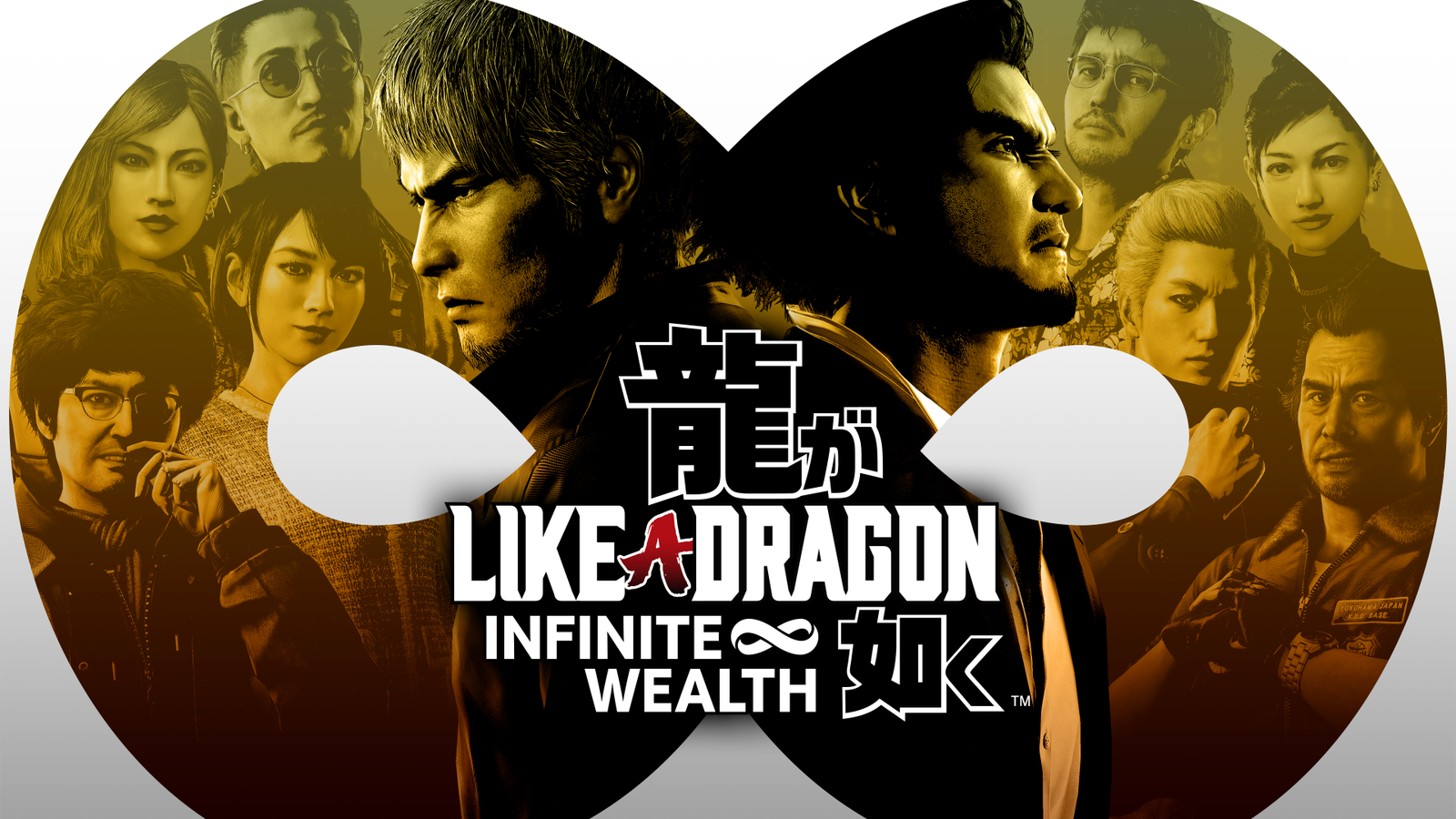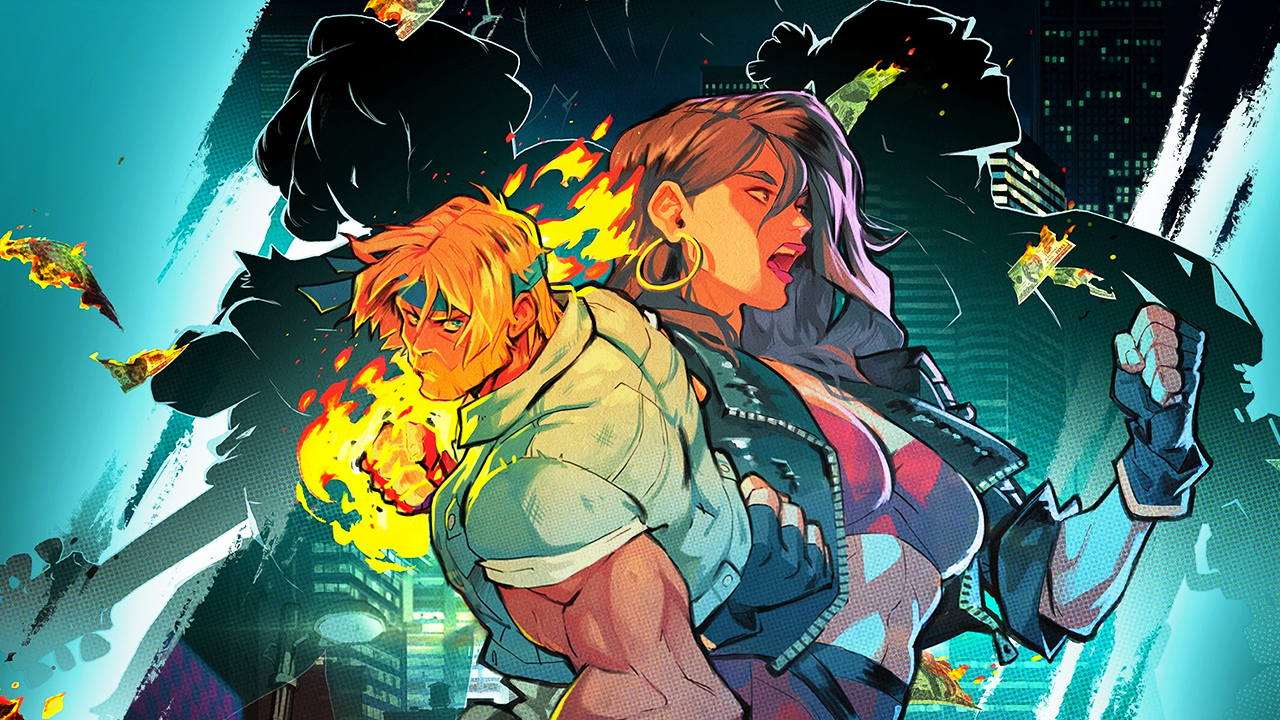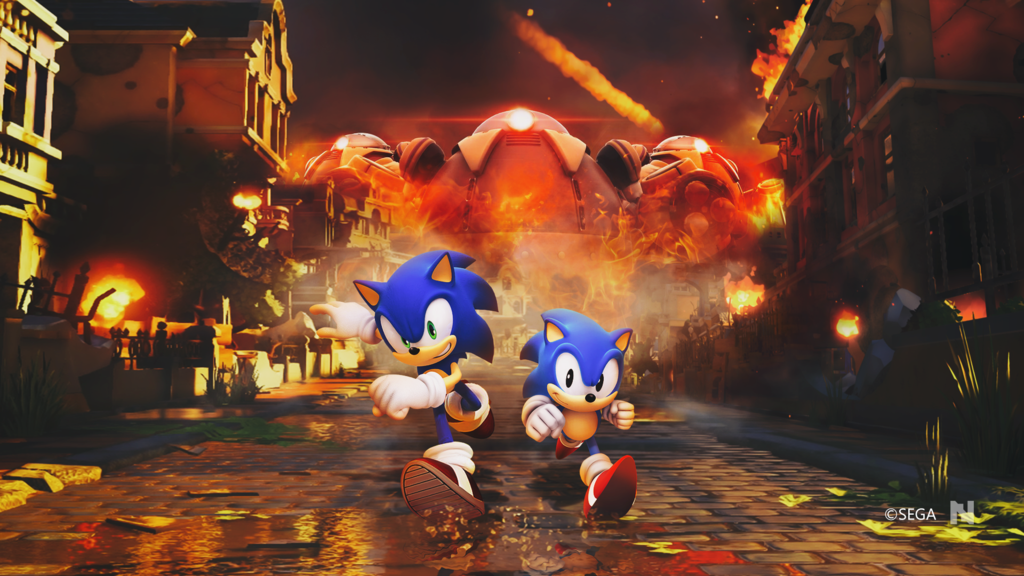Like A Dragon: Infinite Wealth Review (PS5) – To Infinity
Like A Dragon: Infinite Wealth is the latest follow-up from Ryu Ga Gotoku Studio’s Yakuza/Like A Dragon franchise. With a slue of multiple sequels and spin-offs tied to it, jumping into one of the games can feel daunting. And there’s no definitive answer for which one to play first. The only consistent trend is that you’ll immediately want to boot up another by the time you’ve rolled credits.
To summarise the mainline series, they are action-adventures set in the fictional yet familiar district of Kamurocho, Japan, following the iconic Kazuma Kiryu as he wades through the tribulations of being a member of the Tojo Clan; one of the biggest Yakuza clans in the country.
However, that totally undersells what the games pull off; the stories told, the action that unfolds, and the sheer volume of heartwarming or hilarious side quests/minigames make the series overall dense with unforgettable moments. RGG could have easily settled on their winning formula and still done really well with fans. But for RGG, settling wasn’t an option, as 2019 saw the release of Yakuza 7: Like A Dragon. Leaving the district of Kamurocho for the grimier Yokohama, switching the beat ’em up combat to turn-based and following a new protagonist, Ichiban Kasuga.
It was a bold new step for the studio that must have paid off as Like A Dragon: Infinite Wealth continues on the journey that Yakuza 7 set out. But is this a sophomore slump for Ichiban? Or a sequel of infinite quality? I hope you’re wearing your lei because this review is going to be a lūʻau.
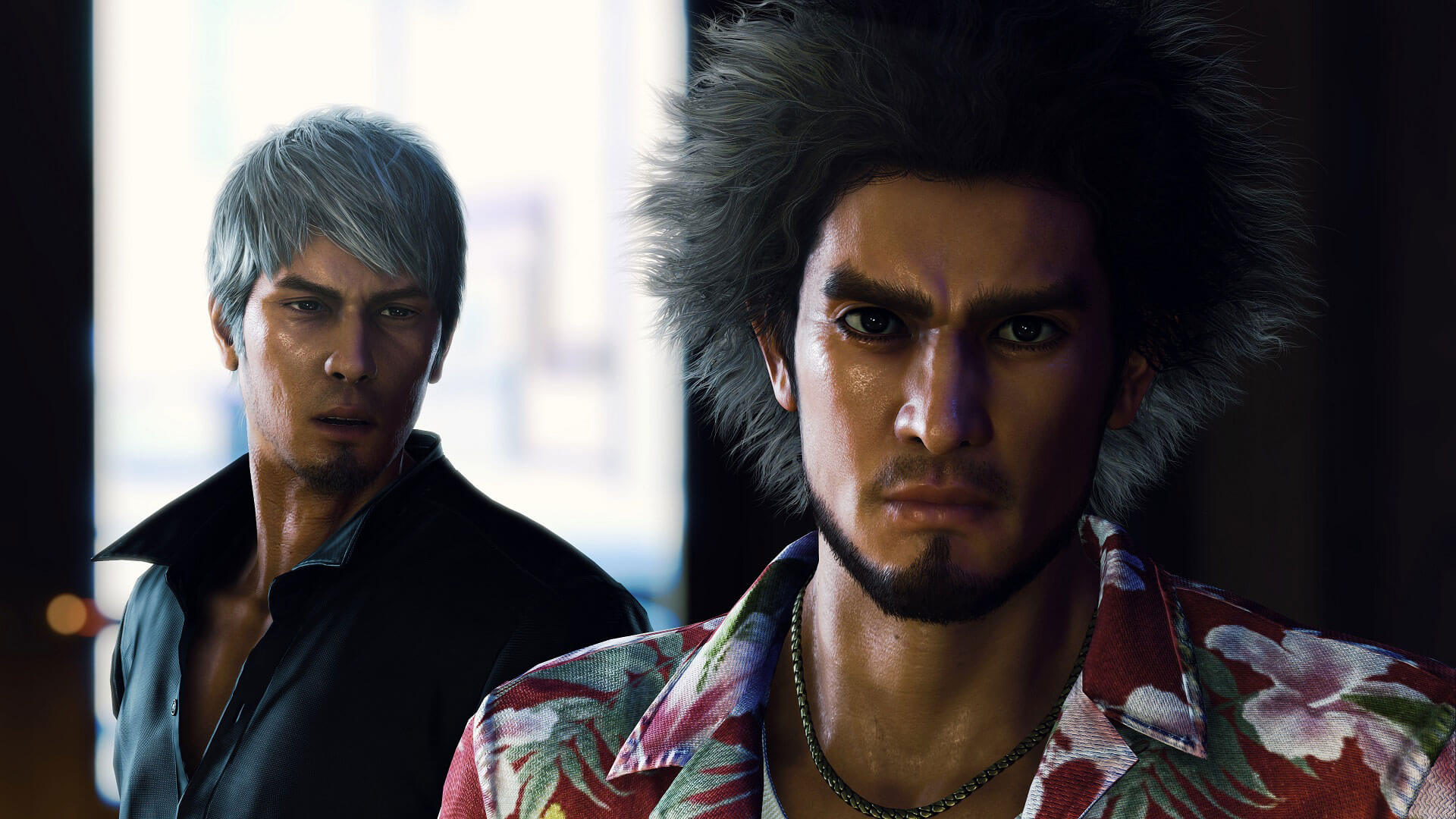
A-loko-hama
Like A Dragon: Infinite Wealth takes place 4 years after the events of Yakuza 7. Ichiban is considered the hero of Yokohama after taking down the Yakuza, lessening the grip they had across the district. Instead of basking in that notoriety, Ichiban spends his days with a humble desk job, helping ex-Yakuza members find an honest living. For plot reasons, he loses his job and starts off more or less back where you find him in the first game. Then someone from his past compels him to take a trip to Hawaii, with the assistance of Kiryu.
I’m trying to stay as vague as possible because the whole plot is full of spoilers if you’re at all a fan of the series, and the rest of the game just continues with some of the biggest moments I’ve played – for the franchise and for video games of all time. Yakuza 7 expanded the series’ ensemble in epic ways and Infinite Wealth takes that even further. With new characters and old ones that you’ll fall in love with for the first time or even more than Y7. Whilst the game starts off extremely slow, the story opens up and gets into the thick of it after 6 hours, and by then you’ll truly get lost in the story.
In true Yakuza fashion, Infinite Wealth is tonally all over the place. There is no other game that’ll have you crying over a side quest and then in the next minute burst out laughing at its absurdity. You’ll quickly feel a kinship with everyone in the game but Ichiban Kasuga solidifies his place as one of the greatest protagonists of all time. Seeing his journey and his uncompromising optimism of seeing the good in people despite adversity is incredibly endearing but also kickass.
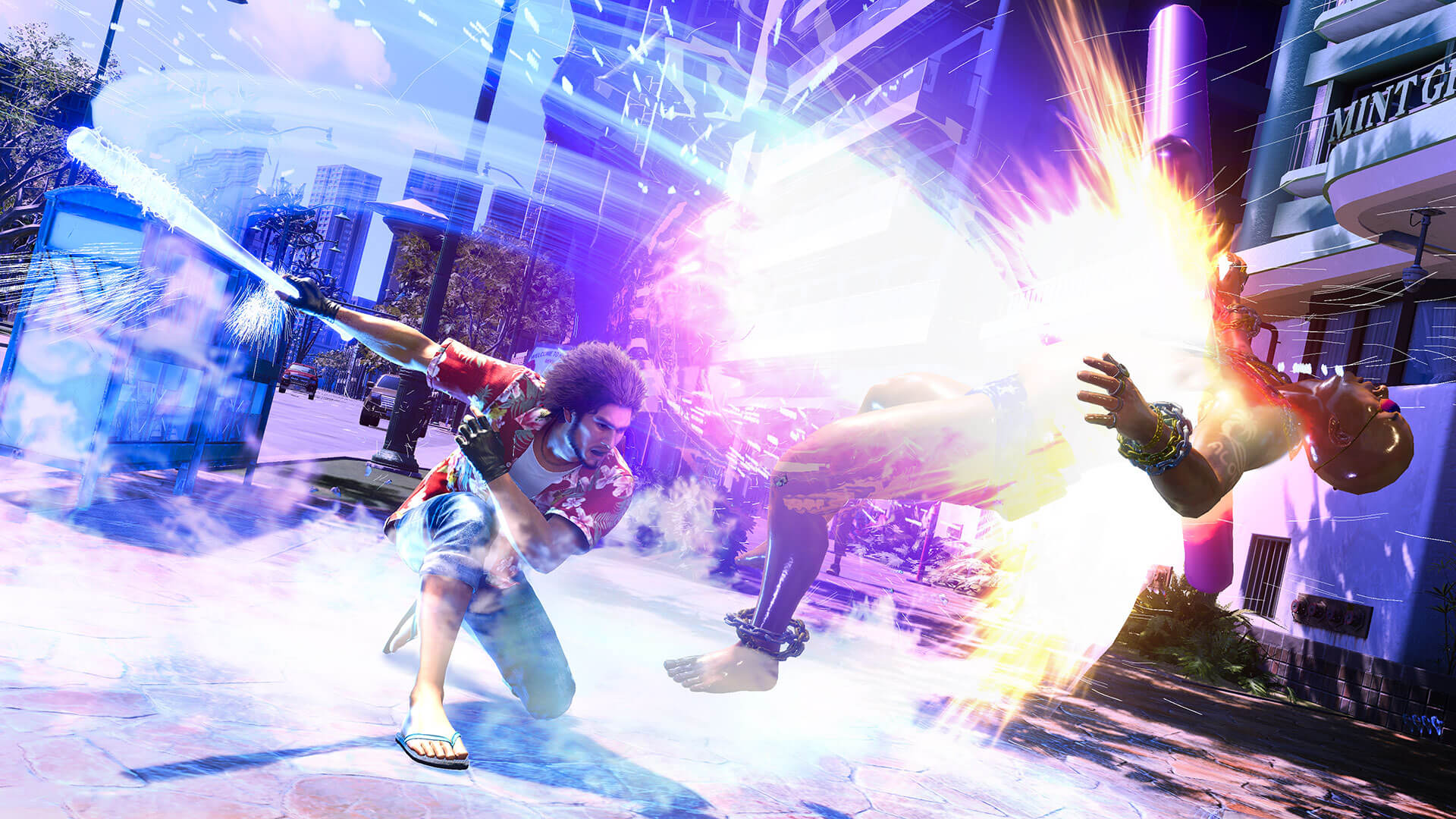
Trouble In Paradise
The new setting of Honolulu, Hawaii first and foremost feels like a holiday episode from your favourite sitcom. The lack of home comforts, the loneliness of travelling without your loved ones and learning of a new culture with their customs is obvious territory for a ‘holiday special’. However, the lengths that RGG go through to establish Japanese migration culture and its factual history within Hawaii make the trip outside of Yokohama feel special.
The studio aren’t new to weaving complex stories that tackle real-world subject matter. Though Infinite Wealth may just be the most developed in the series. Like its gameplay, the game is dense with so much to say and explore through its long cut scenes and exposition dumps. This may be a turn-off for some, but the honest, albeit lofty, approach provides a unique charm that goes deeper than its soap opera comparisons. Yes, it’s dramatic, verbose and unwavering but without it, I don’t think people would love the series nearly as much, and I’m certainly on board with it too.
As a playground, Honolulu doesn’t feel as cramped as the previous settings. Whilst not every building is enterable with a minigame, shop or restaurant like Kamurocho, the open space allows Infinite Wealth to feel more grand. Environments are still brimming with detail; from sun-kissed storefronts to the crystal blue sea that you can swim in (a series first, I believe), the game succeeds in being a bigger, yet equally as exciting setting.
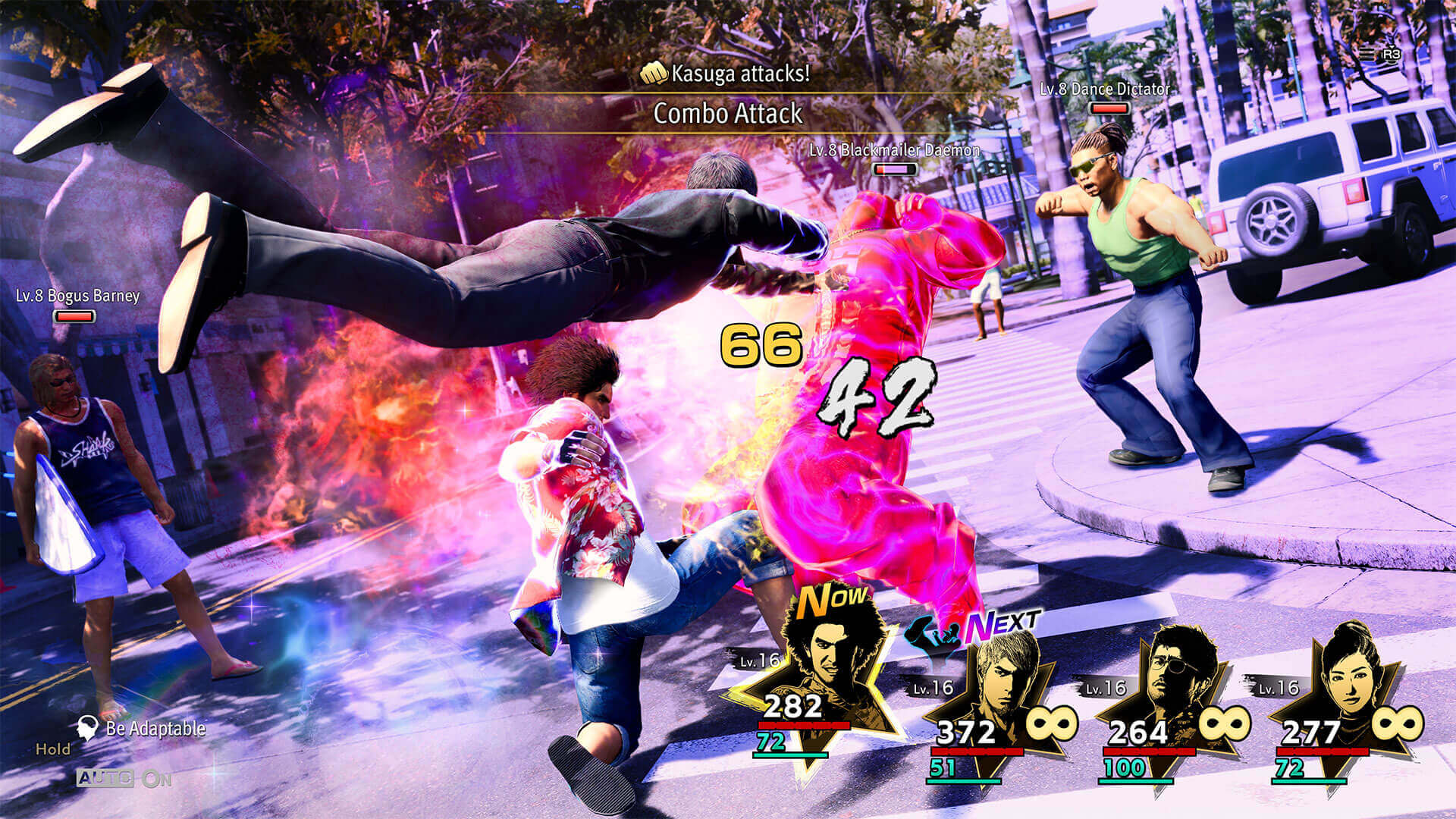
Hawaiian Punch
As I mentioned at the top, RGG Studios have transitioned their mainline games combat to be turn-based. Like A Dragon: Infinite Wealth continues with the same format, but with some subtle yet distinctive tweaks to make it play even better than the previous title. Before Y7’s release, RGG mentioned how they felt inspired by Dragon Quest and that Ichiban in the game also has this hero fantasy like an RPG protagonist.
This then transforms the combat scenarios from mundane real-life people into weird caricatures that relate to their enemy type. A hacker becomes a technomancer, creepy dudes turn into brief-clad oily assailants. The designs are ridiculous, inventive and just add to how eclectic the game already is. It never gets old coming across new types of enemies in battle.
In broad strokes, it is your standard turn-based affair. Ichiban and his three party members take turns whaling on their enemies. Whilst the enemies attack, you’ll be able to block in real-time to negate some of its damage. Certain enemies will have elemental weaknesses that your weapon or special abilities can utilise to do higher amounts of damage.
You can change how all of your characters fight by changing their ‘jobs’ later in the game. Think of jobs as roles in party-based combat; like your damage dealers, healers and tanks that can take aggro. Like A Dragon: Infinite Wealth cleverly gives you real-world jobs to assign that then transform into combat scenarios.
They change up the character’s stats accordingly but also their abilities to cater to certain elemental requirements. This offers an amazing amount of variety and when you couple this with the plethora of weapons/gear you can equip, it makes for an endlessly satisfying journey to find a play style that suits you.

The Dragon of Dojima
As for some of the combat changes, you can now move your character freely with a parameter, see where your AOE abilities will land, and see the direction your enemy will go after an attack – so you can either send them into another character for a follow-up hit or into environments to do more damage. Outside of combat, spending time with your party members creates stronger bonds. Stronger bonds unlock Tag Team moves, like a co-op ultimate ability, as well as new narrative opportunities.
They are all very subtle changes that after four years away from its prequel just felt like a seamless upgrade. The focus on positioning your attack and manipulating the direction enemies will go for proximity is such an engaging aspect of the combat. This also helps with using objects in the environment to pick up and use as an attack, in classic Yakuza fashion.
Kiryu is a mainstay party member and whilst you can’t button mash your attacks for ultimate chaos anymore, the combat still reflects his dominance in the fighting streets. Like in Kiryu’s games, he still has his three different stances that equate to different styles of attacks (fast and light, balanced and slow but defensive).
The three styles offer a quick switch-up in how you approach certain enemies, making Kiryu a must in your party. If you’re near environments when you attack, he’ll often do his signature heat actions to decimate foes, like grating someone’s head onto the grill of the car or wrapping a bicycle around their head. It all keeps the core of what made him so cool, whilst staying relevant within the change of gameplay style.
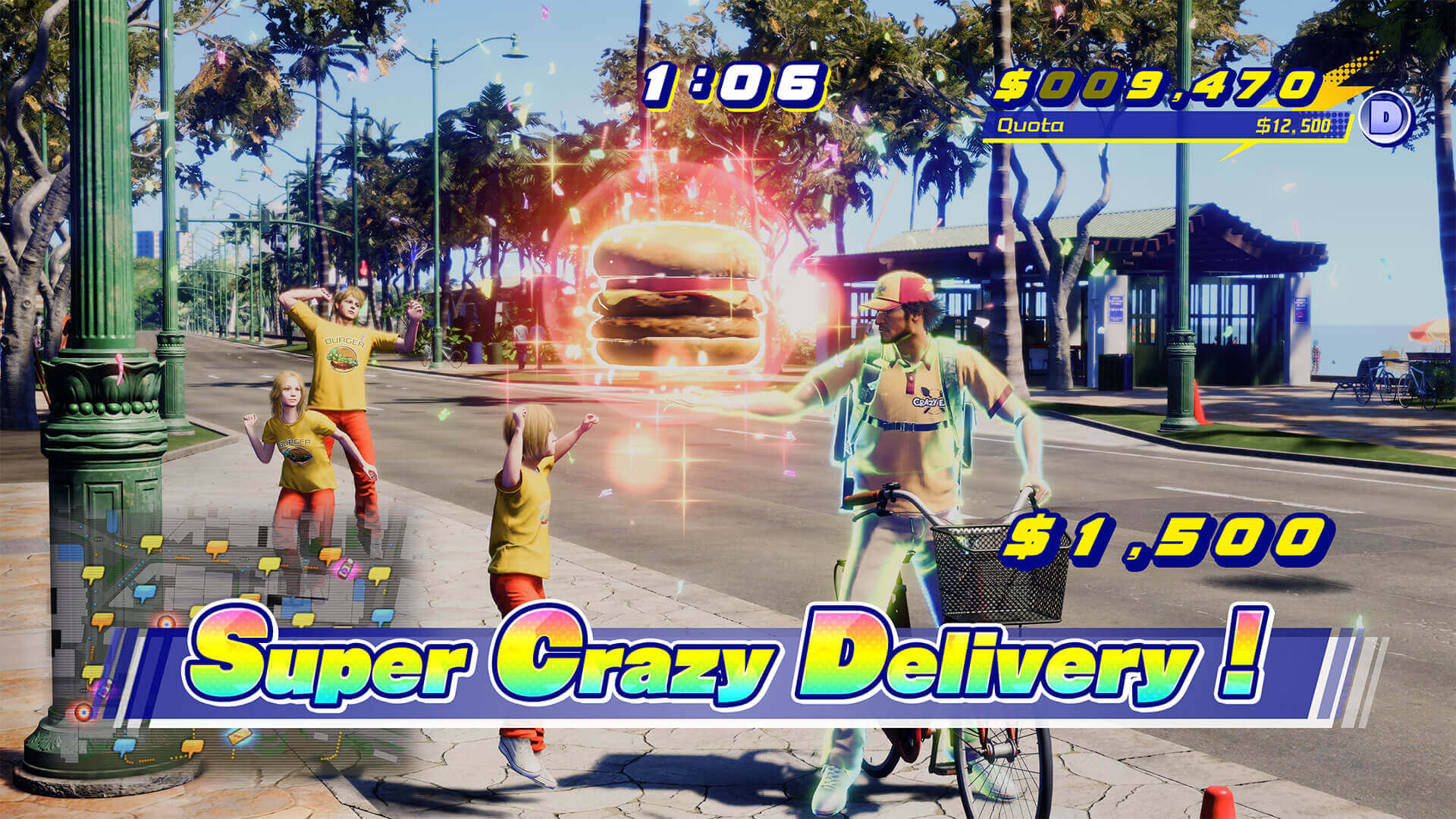
Treasure Island
When you’re not beating the snot out of bad guys or following the story, you’ll have two side quests that could objectively be whole games themselves. The first of which is the Sujimon mode. Remember those transformative enemies that I talked about with the combat? Yeah, now you can catch them as Sujimon, train them and use them in a different combat scenario kind of like that other monster battler. Other trainers are dotted around the area for you to fight and there are even badges to collect all tying in to an overall arc connected to a substory.
You’ll easily fill up your time with this mode. Hunting down the best Sujimon and training them to increase their rank as well as yours is a long process. The battles aren’t as robust as the main combat, but it borrows similar elements for a static 3v3 format. You really can’t complain about this mode though as it’s entirely optional but still bigger than other full games in the market.
If being the very best, like no one ever was isn’t your jam, but being a property mogul is, then do I have something for you. New to Like A Dragon: Infinite Wealth is Dondoko Island. This is an Animal Crossing-inspired “minigame” that you’ll come across around the halfway mark that sees you restoring and designing your own resort.
What starts off as an unhabitable establishment, Dondoko Island can be a thing of dreams – if you have the 50 or so hours to make it as such. You’ll have your daily incentives to help increase your rating for the island, unlock new furniture etc. to make it look snazzy and overall it can net you some of the most amount of cash for the game.
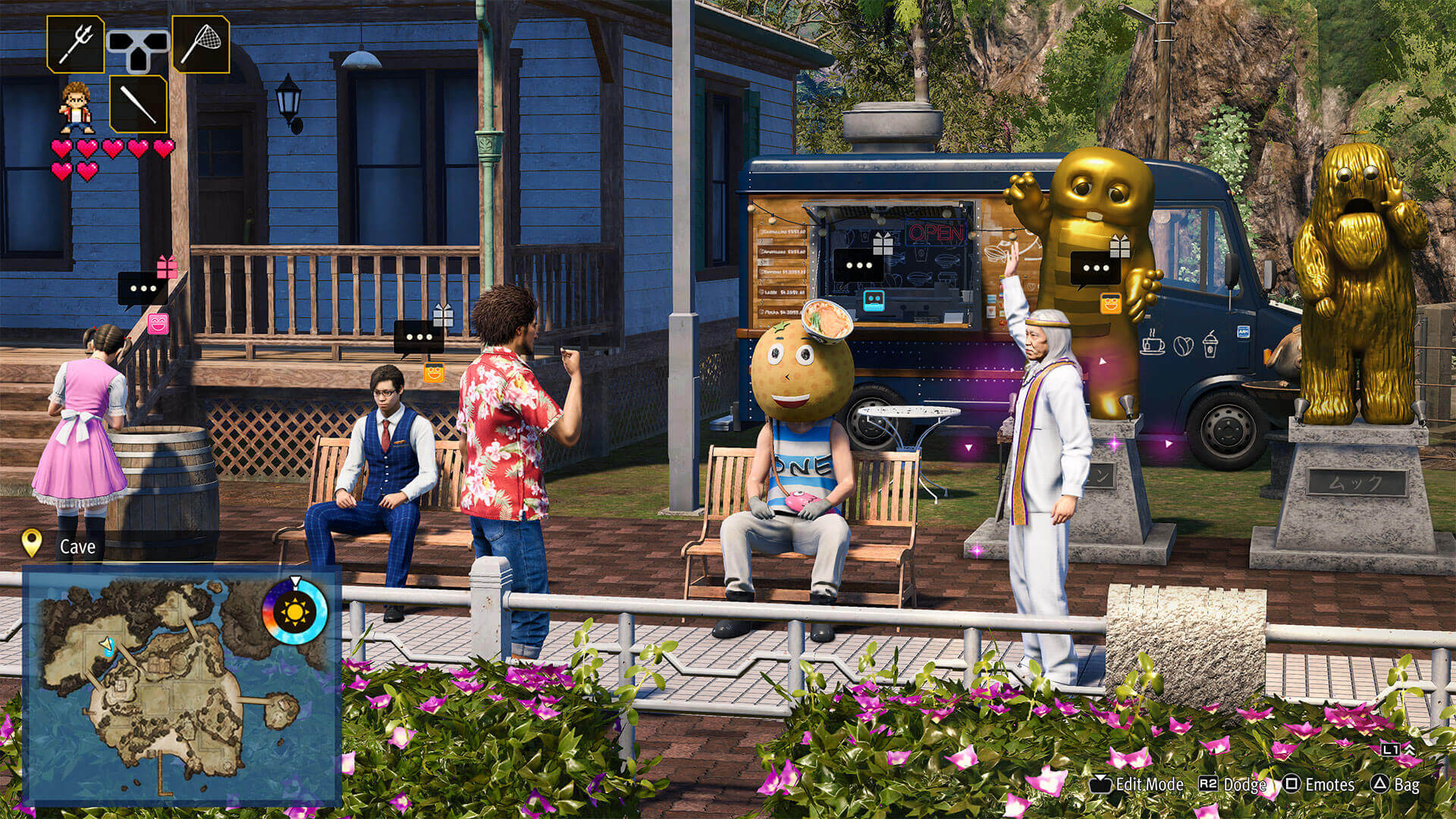
Cast Away
I’ve barely scratched the surface with Dondoko Island as it feels like it could be its own entire game, more so than being a Sujimon master. Like A Dragon takes on the moniker of Infinite Wealth quite literally as there is honestly so much to play. Outside of those two main minigames, there’s the playground of activities you’ll come across. Whether it’s staples like Shogi, Darts, Karaoke or newer events like being a delivery driver in a Crazy Taxi-like fashion, it all exceeds in being extremely fun to play.
I don’t think I can even label it as a criticism to say there’s maybe too much to do. The bar of quality is already at a higher standard than most other titles and nothing feels like it’s wasting your time. Even old modes like online dating have come back in a revamped, interesting and hilarious way. Like A Dragon: Infinite Wealth is all-encompassing with its laundry list of side activities and I think that aspect lends itself to your immersion of being a part of Ichiban’s story.
You could easily spend whole sessions exploring one facet of the game, ignoring the main narrative and just being enveloped by it all. With Infinite Wealth being cross-generation some graphical elements hold it back. The lighting, character animations and overall world design are still great. However, NPCs, finer details and some of the environmental effects are slightly jarring. To the game’s credit though, it’s massive so to iron out all the creases feels impossible.
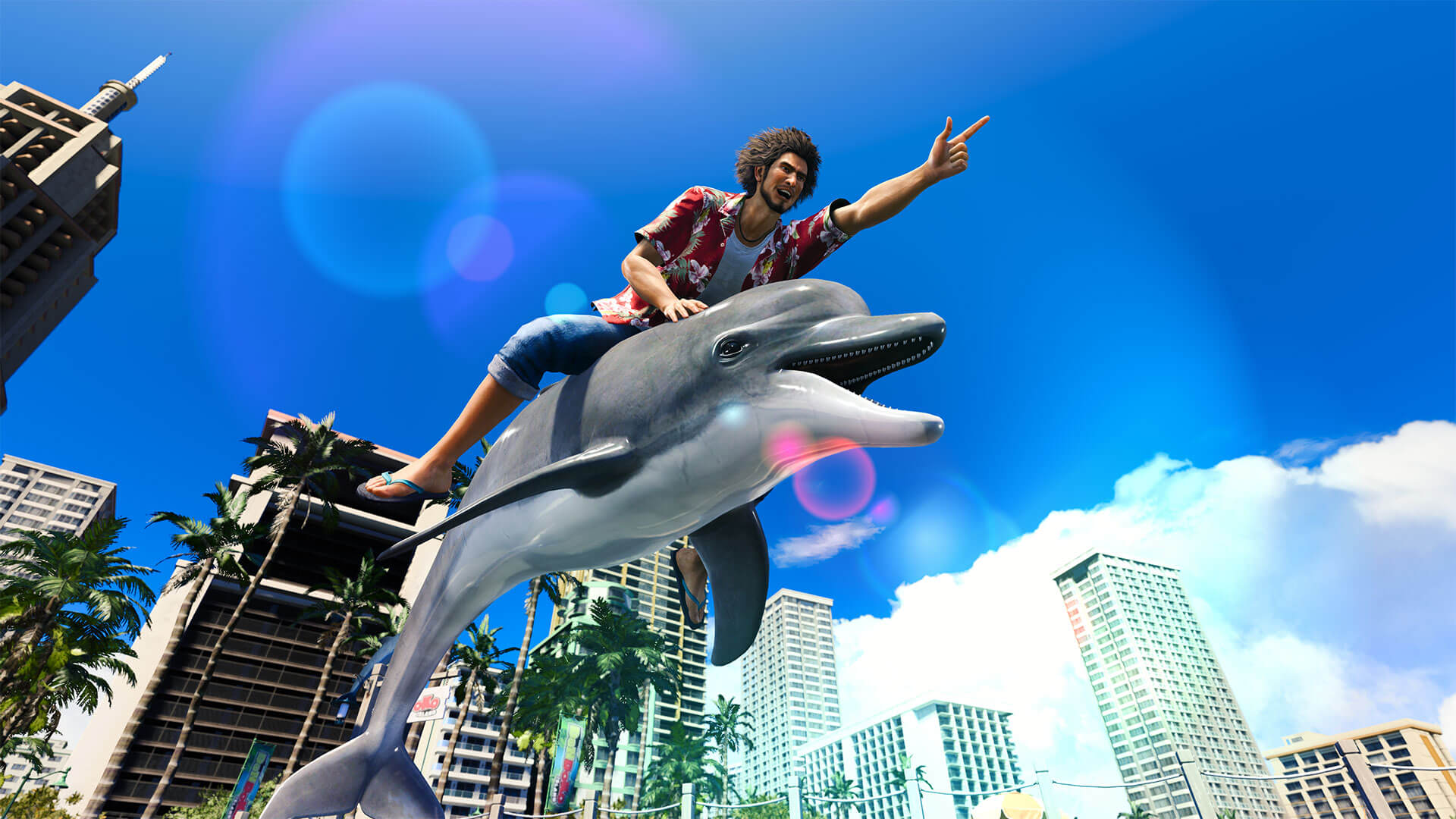
And Beyond
What more needs to be said about Like A Dragon: Infinite Wealth? This is the biggest, boldest and most creative the series has ever been. The switch over to being fully dubbed in English as well as native Japanese opens up even more players to enjoy the game, with performances across the board being amazing.
The scope of the story told here, as well as the themes it goes for is inspiring. As someone who did play the previous game, even I couldn’t remember previous plot points and characters, and there was no way in-game to get yourself properly clued out, which would definitely help new players too. The depths of the vast amount of systems don’t feel overwhelming because of their pacing. There’s still more to discover that I’ve not even mentioned, but just YouTube Like A Dragon: Infinite Wealth Pound Mates, I promise it’s not rude, and watch in awe at some of the game’s most absurd moments.
Other than a couple of pacing issues, some unapologetic ‘if you know, you knows’ and looking ever so slightly dated, this is the series at an all-time peak. My advice is to playthrough Yakuza 7: Like A Dragon because Like A Dragon: Infinite Wealth will be an inexplicably better experience if you do. Ryu Ga Gotoku Studio has truly outdone themselves with this game.
Like A Dragon: Infinite Wealth is the series at its absolute best. Everything about the game from combat, story and the world is the most robust and enjoyable it has ever been. The game doesn’t cater as much for newcomers, but the plethora of high-quality moments make it an undeniably incredible RPG.
Like A Dragon: Infinite Wealth is out now for PlayStation 5 (review platform), PS4, Xbox Series X|S, Xbox One and PC via Steam.
Developer: Ryu Ga Gotoku Studio
Publisher: SEGA
Disclaimer: In order to complete this review, we were provided with a promotional copy of the game. For our full review policy, please go here.
If you enjoyed this article or any more of our content, please consider our Patreon.
Make sure to follow Finger Guns on our social channels –Twitter, Facebook, Twitch, Spotify or Apple Podcasts – to keep up to date
